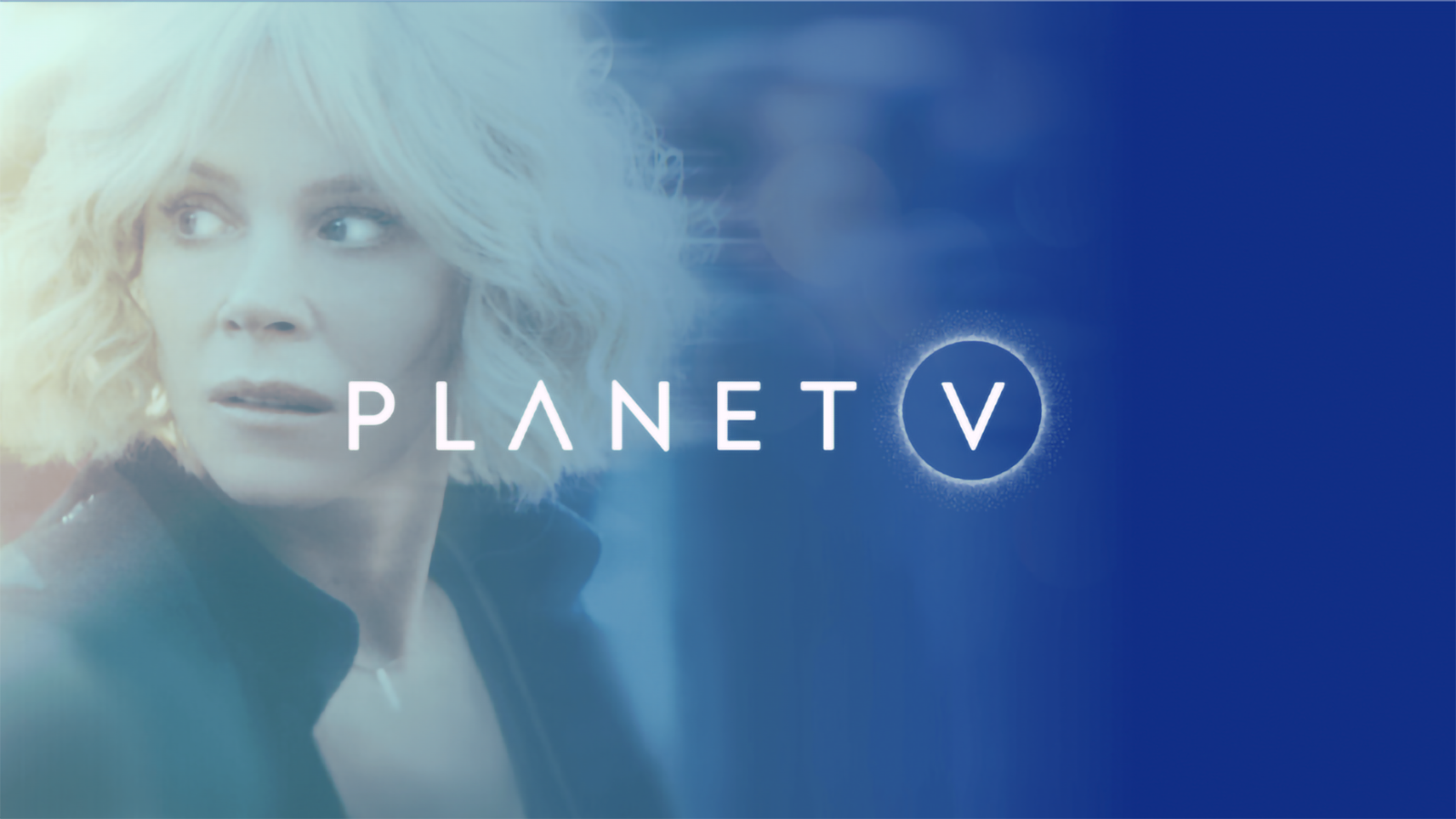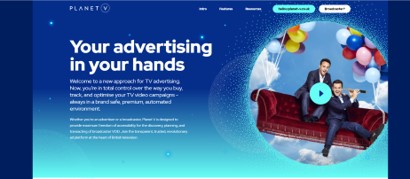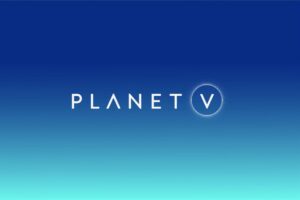Introducing ITV’s Planet V

6 months after ITV’s launch of its programmatic platform called Planet V, Rhys McLachlan, Director of Advanced Advertising at ITV, tells us about this new solution, demonstrating how broadcasters are transforming the TV advertising experience for advertisers.
How does Planet V work? In what way is it a game-changer in the market?
Planet V is an end-to-end, programmatic solution that has been built for and by the television industry. It will enable us, and our partners, to have complete control of the value chain. It is unique firstly in that it’s a truly end-to-end, complete solution, but also because we are not proposing to integrate with any third-party buying platforms. In many respects, we are unashamedly attempting to establish a walled garden proposition that maximises retained value for broadcasters.
What we’ve developed and want is now in the market as a wholly constructed, end-to-end platform solution for broadcasters and broadcast advertisers that includes a DSP, SSP, DMP and an ad server. It’s unique as it offers all these components within a singular proposition and also because, at this point in time, we are not giving any consideration to integrating with any third-party buying portal. So we are establishing sovereignty and control over the value chain and the programmatic workflow.
With the launch coinciding with the pandemic, how did the market respond?
We deployed the platform within the ITV infrastructure at the beginning of the first lockdown. Clearly it was quite challenging as, by necessity, we found ourselves working remotely. But we are operating a concierge model, with in-house ad-ops teams acting as proxy agents of the platform, converting IO’s to platform campaigns, this has been vital in ensuring that we have rigorously assessed all the components, working features, protocols, and processes.
A critical consideration for us is that, on release to our advertiser and agency customers, the platform will be completely self-service. So it’s critical that the platform operates to a gold standard.
To that end, COVID hasn’t necessarily had a detrimental impact on the delivery of the platform but it has made us re-architect the support facilities that we had designed for our external customers. That is the biggest challenge we are facing. It made us rethink the most effective ways of training, supporting and upskilling our people – to provide the best support facilities when we cannot be physically present.

Buying programmatic, data-targeted VOD in premium and brand safe environments is a true value proposition to advertisers. What inventory do advertisers have access to and what types of advertising can they book?
Upon release, it will be ITV-only inventory and I’m delighted that we’ve confirmed terms with Samsung TV+ to join the platform later this year and have a number of other tier 1 broadcasters in the pipeline for activation.
There is a certain threshold in terms of inventory quality that will need to be attained by those other publishers. Primarily, we are talking about broadcasters, because this is a TV solution. But that will extend to AVOD players who are entering this market and some of the more premium print brands which have invested heavily in the production of high-quality video over the last few years.
For advertisers, the solution itself is the video asset. That is Pre-Roll, Mid-Roll and Post-Roll: We are not at this point augmenting that solution with outstream units or display. It’s a solution that is comparable to conventional, linear television: The same assets repurposed and the same advertising experience for the viewers who are consuming that content.
Is there a plan to add linear to the platform?
Yes, our roadmap also extends to how we are able to bring linear addressable into the Dsat, DTT and DTH environments as and when we have the right distribution deals – and when the technical infrastructure of those platforms can support the decisioning and allocation functions that reside within Planet V.
We’ve been quietly going about the process of incorporating a significant cohort of simulcast-over-IP viewing into the eligible inventory pool and we’ll be scaling this over the course of 2021.
It’s all about ensuring that we have the necessary engineering and connections in place to enable us to do that.
Why choose an exclusive ITV solution?
This is a completely transparent model, because all the technical requirements for a programmatic workflow are contained within Planet V. There is no disintermediation by third-party technology agents – who, more often than not, extract value in the chain. So it is designed to be transparent and holistic, in the sense that you can manage the entirety of your programmatic requirements in the platform.
What’s more, there will be the development of a single ID that will enable customers to be able to plan and activate their programmatic campaigns across a raft of participating publishers, in a holistic way – rather than within silos.
What does the advertising experience look like?
It’s designed to be as simple and intuitive as possible. Our primary audience in the first instance is TV buyers. Many agencies operate Audiovisual teams, within which programmatic video is increasingly an important part. But, to really crack the TV market, we have designed a solution that expedites access to the content and to the audiences that TV buyers are accustomed to getting for their linear schedules; one that has an intuitive user interface that ensures that the planning process is easy to manage. The application of data has been designed in a way so as to offer consistency.
The user journey has to be compelling, elegant and well-architected to ensure that we are providing the best customer experience. We are very proud of the UI we have developed with Amobee. Initial customer feedback, 6 months post deployment has been incredibly positive. That said, we’ve been closely consulting with our agency users, gathering feedback and recommendations, and have an evergreen roadmap of feature enhancements and upgrades designed to further improve the user experience.
Why not allow all major DSPs to buy programmatically?
It’s incredibly important that we maintain sovereignty over the value chain. There was a PwC report commissioned by ISBA mid-2020 which revealed that, in the programmatic ecosystem, 49% of every dollar spent by an advertiser was extracted from the process prior to ad revenue arriving at a publisher. That is a dreadful business model. The extent of that tech tax is simply not viable for premium broadcast inventory. Restricting access enables us to maintain control and sovereignty over the sell, across the entirety of the process. That is incredibly important for the TV business. Outsourcing your demand and your buyer access to any number of third parties is likely to result in diminished returns for you as a business. There will be an erosion of value through the chain if you are entering those sorts of arrangements.
How do you convince the buy side?
I would argue that the buy side doesn’t need convincing. For some period of time, there’s been a real appetite for programmatic access to ITV inventory – which ITV has, largely up until this point, withheld. What we are entering into now is a period whereby the market will be significantly scaled in programmatic access to ITV inventory. We are appending with that the opportunity to be much more sophisticated in terms of data activation via our DataMatch solution which has been developed by our partner InfoSum. ITV has been reticent in engaging in the programmatic space until such a point it felt that it had a solution that reflects well on them as a business and meets the needs and expectations of advertiser customers.
Is it open for all types of buyers or focused on agencies?
It is a cloud-based portal. So long as there are commercial terms in place with ITV and the advertiser or the agency, it is democratic in the provision of access. The idea is a self-serve facility whereby advertisers can activate in an intuitive, programmatic way – of course subject to commercial terms being agreed with ITV, which is standard for any publisher and advertiser relationship.
What are the next steps for the platform?
For 2021 we will be focused on scaling the platform to become a multi-publisher proposition. We’re likely to have more than half a dozen additional publishers active on the platform for H2 2021.
We also continue to work with key stakeholders in the ecosystem on the development of common standards – on technology, on activation, on quality, on how we address issues around fraud, and of course secure activation of data that ensures we can compete on a level footing with the large walled gardens from the west coast of the US.
The platform will continually evolve. We have a roadmap to the end of 2021. The aspiration is to build a robust, comprehensive walled garden proposition that has a multitude of broadcasters participating and with which, collectively, we can drive a programmatic agenda that works for the TV industry and one within which we are in control. And by ‘we’ I mean the industry itself. Not just ITV.
We’ve also entered into a partnership with InfoSum that will enable us to activate targeting against 30 million hub-registered ITV users and therefore allow more detailed and granular targeting of customers, based on their own customer segmentation. In addition to that, customers will be able to bring their own first-party data sets and match that into the ITV identity through the Data Match initiative. The new Planet V solution enables insights, targeting, and full-funnel measurement by using advertisers’ own first party data and uncovers customer-journey insights specific to their customers’ viewing behaviours and preferences. ITV is working with Omnicom’s client base as the launch agency partner and Deliveroo as the first brand partner. It is a significant step forward in the way that advertisers will be able to engage with TV inventory and access to deliver their marketing objectives.
What’s your vision for video sales in the future?
The thing we need to do as an industry is agree some standards – around data, tech, process and the way we deal with customers. Harmonisation is how we’ll be able to aggregate the power of propositions and deliver for our advertiser customers solutions which are as compelling, as effective, and as aspirational as those which have been developed by the Facebooks and the Googles of this world. If we continue to pursue silos – agendas just for us or just for you or for them – we will probably fail.
What customers want is joined up commonality; a joined-up approach to data and tech that makes their lives easier and enables them to be more effective in the way they plan and buy video. That’s what I’d like to see in the future: much, much greater collaboration, in a way that’s more meaningful. That’s critical. To act collaboratively to determine our own destinies, rather than outsourcing that to third party, independent technology businesses.
Rhys McLachlan, Director of Advanced Advertising at ITV
